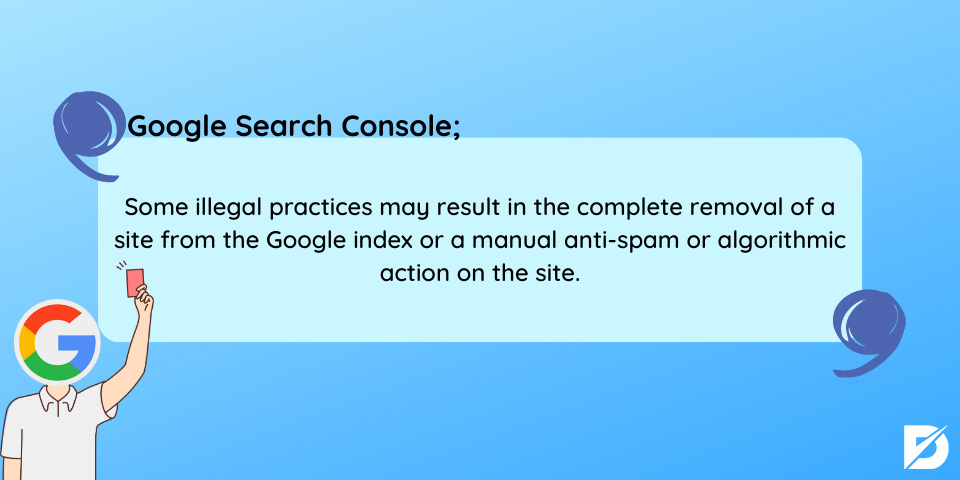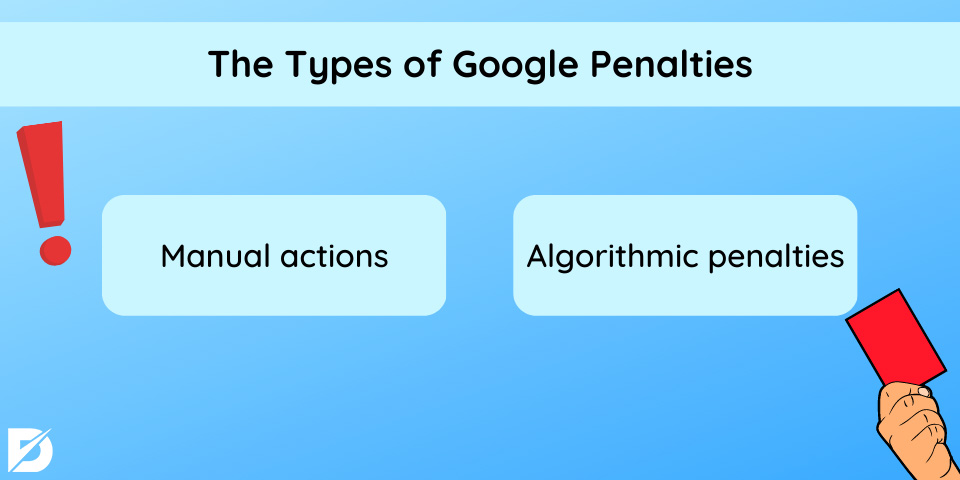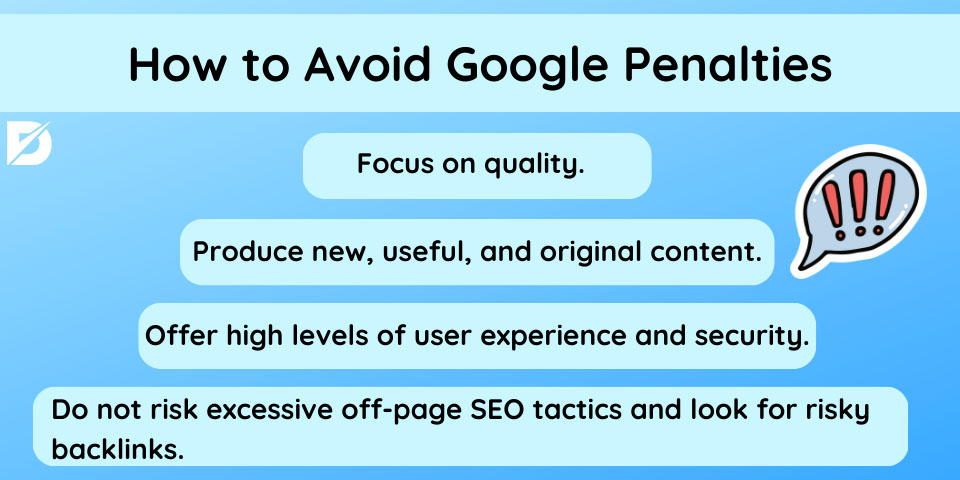Paraphrasing a well-known advertising campaign of the late eighties, we can say, “If you know them, you avoid them.” Today, our blogs deal specifically with Google penalties or the various actions with which the search engine punishes the sites responsible for behaviors in contrast to the guidelines. Primary references are the acquisition of black-hat backlinks or online spam activities.
A Google penalty is a sanction imposed on a website for breaching Google’s webmaster quality guidelines. Referred to as “manual actions” in Google’s documentation, these penalties can lead to pages or entire sites being ranked lower or even completely excluded from search results.
The Risks of Irregular Tactics
Let’s face one of the main bogeys that terrify the days of those involved in SEO and site management. As well as those who work with link building. The main method to avoid risks is to better understand the field of our business and Google rules. Some black-hat SEO tactics, risky backlinks, or unoriginal content can cause a negative impact.
What Are Google Penalties?
The starting point is the instructions for webmasters disseminated by Google through the Search Console guide. The section dedicated to quality standards describes, “Some illegal practices may result in the complete removal of a site from the Google index or a manual anti-spam or algorithmic action on the site.”

Google Targets Sites That Use Illegal Practices
In other words, when Google discovers that a site has taken actions contrary to its guidelines, it intervenes with a specific penalty, which translates into the removal from the search engine index for a single page or, in the worst cases, for the entire site. When this happens, in practice, “the site subjected to an anti-spam action may no longer be displayed in the results of Google.com or on any Google partner site.”
The Techniques Not Recommended on the Search Engine
On closer inspection, these instructions closely follow the directions for creating a site with Google’s recommendations, with clear and simple points to follow and respect:
- Designing pages for users and not for search engines.
- Avoiding deceiving users,
- Not using tricks to improve rankings
- Finding a way to make the site unique and valuable.
Then there are several specific techniques that they don’t recommend, such as content automatically generated or copied from other online resources, link schemes, cloaking or doorway pages, which we have already encountered in the deepening of black hat SEO and which represent, precisely, manipulative tactics that can cause a penalty by Google.
The Types of Google Penalties
Broadly speaking, there are two general categories of penalties on the search engine;
- Manual actions
- Algorithmic penalties
But in reality, there is much discussion on this second definition. To be more precise; in fact, the variations determined by the updates of the Google algorithm are “re-calculations,” or “adjustments” produced by the search engine’s attempt to be more and more precise in responding to user requests and respecting its own quality standards, as pointed out several times by the Googlers.

Google’s Algorithmic Penalties
In this sense; the sites that suffer a drop in organic traffic and ranking in SERPs following algorithm updates have not done something wrong but have been evaluated as less deserving than their competitors based on Google parameters. Which we know also exploits the hidden work of its quality raters. (Who are precisely the evaluators of the quality of the search results provided by the engine; with useful indications for the subsequent corrections of the system.)
Manual Actions, Google Sanctions to Sites
Therefore, the real penalties of Google are the manual actions; the concrete sanctions that the Mountain View team inflicts on a site responsible for an established violation of the search engine guidelines. In fact, a division of specialists deals with individually reviewing the sites and assigning penalties if irregular behavior is ascertained, especially to continue the fight against spam, which remains a central problem on the Web.
When They Enable Manual Actions
The manual actions of the anti-spam team are initiated mainly in three circumstances; high spam risk on a resource, competition in popular SERPs with a high audience and sensitive topics (as in the case of YMYL topics), or as a consequence of spam reports by users to the search engine. However, as John Mueller recalled, we must remember that there are no automatic penalties after these reports. Also, even spam sites can position themselves because Google also evaluates other factors.
How to Find Out If a Site Has Been Penalized
If you are here, you are probably familiar with what is Google Search Console. Since 2012, there has been a specific section in the Google Search Console; the platform with all the tools for webmasters made available by the US giant signals and notifies the presence of sanctions on the site. If the site has suffered a penalty, the owner or manager receives a message with which Google describes the problem.
The other way to find out if a site has suffered a penalty is to use Google to search, and not finding even a URL previously positioned among the results in the SERP is a clue, which can be confirmed by the search with “site:”. When no results are shown; it means that Google has removed the site from its Index, reacting with the terrible ban.
Site Criminalization: Does Google Only Hit the Offending Pages?
In general, the search engine’s penalties don’t concentrate on hitting the site in its entirety anymore; but rather on removing it from the Index or collapsing the rankings of specific pages that have violated the rules and committed infractions.
How to Avoid Google Penalties
From what has been written, it is clear that the way to avoid penalization is simple;

- Focus on quality,
- Produce new, useful, and original content,
- Offer high levels of user experience and security,
- Do not risk excessive off-page SEO tactics and look for risky backlinks.
Focusing on the technical SEO aspects is no less important than creating an optimized structure for the site. This allows high performance even for mobile navigation.
Penalized Website: How to Get out of Penalties
Even the most serious cases of penalization, however, are not decisive. The goal of Google (and the purpose of the communication in Search Console) is to invite you to solve the problems that afflict the site and change behaviors, using the reconsideration request to ask for a reconsideration of the site after cleaning.
Interventions to Recover from a Penalty
Manual penalties can, therefore, be temporary, and a good correction job can lead to a removal of the penalty, with the recovery of positions in search and traffic. Obviously, it takes time and effort. You need to read and understand the reason for the penalty and study the strategy to address the problem.
Penalties are, without a doubt, a part of SEO. You should understand what penalties are and how to identify and fix them. If you’re a (or want to be a) professional SEO, you have to add penalty evaluation & removal to your armory. If you are a business owner, you can use this guide to identify any existing penalties and protect your site. You can imagine it can take a lot of work and expertise. So, if you know you have a penalty, hiring an SEO expert to help you out may be worth hiring.
Frequently Asked Questions About
You can check if you have any penalties in the Google Search Console under Security and Manual Actions. If you’ve received one, you can read Google’s guidelines on how to fix each action.
You can report abusive content on websites indexed and shown on Google by adding your browser’s Suspicious Site Reporter extension.
The broad core update is an improvement (or various improvements) to the overall Google algorithm that’s used to better understand users’ search queries and websites. These improvements aim to improve Google’s accuracy in matching search queries for better user experience and satisfaction.
To avoid Google Penalties, you need to focus on quality, originality, user experience, security, and then backlinks.
The types of Google Penalties are manual actions and algorithmic penalties.





No comments to show.